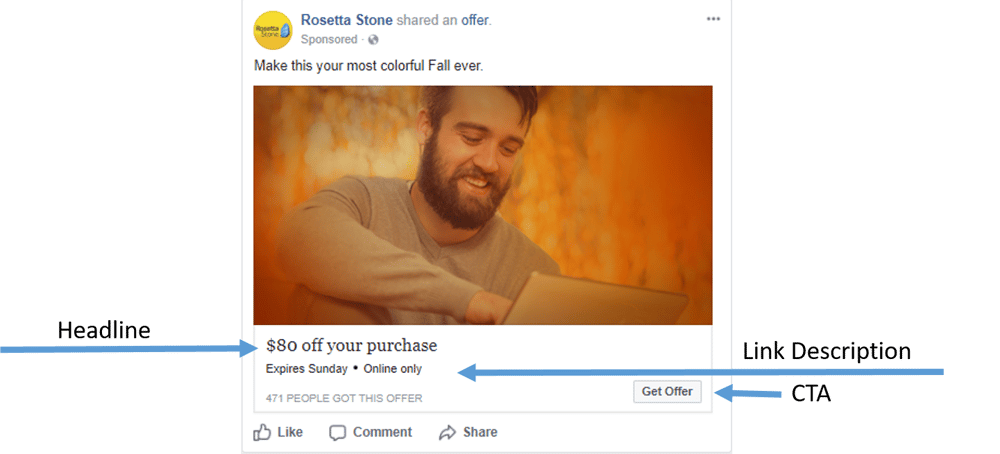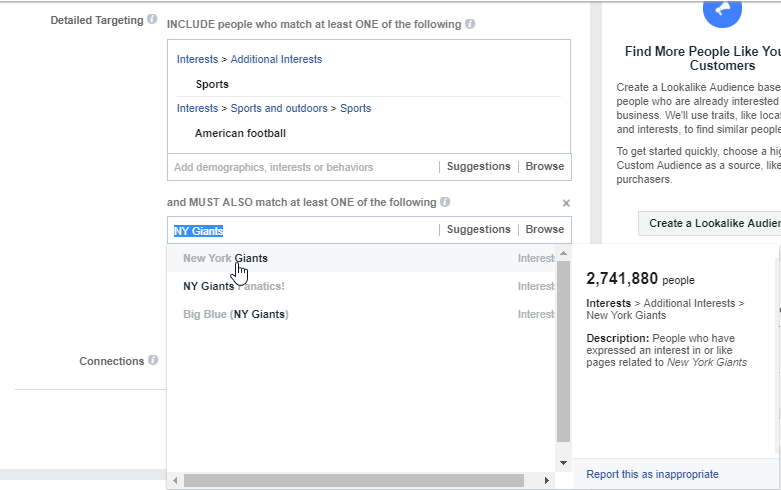May 21, 2024
Tips on Writing Facebook Ads for Business
By Megalytic Staff - October 26, 2017

Make Them Visual
The elephant in the room with Facebook ads is that the visual appeal is critical. We can’t talk about writing effective ads until we first address the fact that the words themselves are only about half of the equation. Consider these statistics:
Facebook ads with images can get 2.3x the engagement (Source)
The images in Facebook ads can account for 75-90% of their performance efficacy (Source)
Carousel ads can have a 10x better CTR than single image ads (Source)
While it’s clear that an image is essential, having the right image is even more important.
Word Counts
Along with the actual image, there is a visual component to the words you use as well. Just the number of words used, and where, can make a difference.
Research indicates that most popular headline length is only four to five words. While the most common word count for a link description is around 15 to 18 words. This still represents only one-third of the word limit for a link description.
Facebook is a little more general noting that headlines with the most engagement are 25-40 characters in length.
Remember that these numbers say nothing of the nature of the words used or the message, but only that concise word counts tend to be the most impactful.
Finally, the image and the words should work together. They shouldn’t be considered as two separate parts of an ad, but one collective call to action. If your image has details related to what you're promoting (dates, locations, etc.) save space by not repeating these in the copy. Remember a four-word headline and a 15-word link description are the goals, so eliminate redundancies where you can. It’s also essential to use images that have the best possible connection with, or visual representation of, the copy being used.
Target Your Message Properly
There’s a lot to think about when evaluating how to target your ad.
By Interests - Less than 45% of Facebook ads use interest-based targeting . But interest targeting is an effective way to introduce your brand to an audience who might not know you. With interest targeting, it’s important to ensure your ad matches the interests you are honing in on. For example, a sports memorabilia site could target interests based on Sports or even Football. But it would likely have the most relevant ad, and capture the most interest, by targeting users with team -specific preferences and matching the copy and imagery accordingly.
Geographically - Ad targeting can be focused on specific geographic areas and yet ~85% of ads are targeted by country, not a specific geographical location. But like interest targeting, the more specific you get, the more appropriately you can tailor your ad. For example, an ad targeted to a population in a large city like New York can be better focused when narrowing by neighborhood like Chelsea or SoHo and using messaging or iconography that will resonate with those who live there.
Demographically – Demographic targeting is especially effective when you have already established best buyer personas. Knowing the lifetime value of customers as it applies to age, income, and family status, and so on, can help you focus precisely on customers who fit those criteria. With this you can use visuals and create ads that speak directly to each audience.
Remarketing – Facebook ads can also be used for remarketing purposes either based on website visits or emails acquired. These users are a little different because they have already been exposed to your brand and the ad is less likely to be a “cold call.” However, that only raises the bar on your challenge to be relevant. By using email addresses that are segmented based on how the email was acquired, you can match your ads to that pre-established interest. Using ads that are created and targeted based on which page or category of pages a user has visited on your website will ensure you don’t show blender ads to visitors who had previously viewed luggage and travel accessories.
Ad to Landing Page – Ad to landing page matching is an important “targeting” element which doesn’t necessarily fall into Facebook’s targeting options drop down. The more relevant your landing page is to the ad you’re running, the better a response you’re likely to get. For example, a clothing store using images of shoes but sending users to the homepage may find themselves with frustrated or disappointed users who now have to search for the high heels that originally caught their eye. Of course, they may just leave. Either way, this negative user experience could have been avoided by matching the landing page to the ad.
As you create your ads, Facebook will provide you with a “Relevance Score,” a figure based on their projections of user responses. While this is not necessarily a definitive grade, as ads with middling scores may still drive results, it can be a useful baseline gauge for the potential of your creative and targeting.
Offers and Calls to Action (CTA)
Another major component of a successful, or not-so-successful, Facebook ad is the CTA and the offer.
In a whitepaper outlining a test of 100k Facebook ads, determined that calls-to-action represent between 10-25% of an ad’s efficiency.
But keep in mind that, the manner of your CTA may vary based on your ad objective. But in Ad Manager, you’ll have the option to choose a button from preset options that include, actions like “Book Now”, “Learn More”, “Shop Now”, “Download” and “Sign Up”.
These preset buttons are a clear and distinct use of a CTA. But in other types, like sponsored sidebar ads, the CTA is less obvious. In those cases the blue text atop the ad or even a portion of the image can serve the same function.
With the button choices, the “Shop Now” CTA is by far the most popular CTA, chosen by advertisers 74% of the time . Others studies show a bit more diversity of CTA use but it’s clear that some are clearly favored by most businesses. Make sure you consider the most appropriate CTA for your offer and choose accordingly.
With the more subtle CTAs that must be built into the headline, copy or imagery of an ad the most effective uses are those which clearly outline an action like click, buy, get or convert. It’s also useful to present a benefit rather than a product.
A quality Facebook ad presents a viable, immediate offer to users. From the headline to the CTA, each ad should clearly outline what a user will be able to learn, buy or engage with through both imagery and copy.
Finally, as with targeting, use a link description that accurately describes what the visitor can expect on the landing page and, if possible, an attractive URL that features your brand.
Conclusion
Creating outstanding Facebook ads is its own micro artform. Though in spite of the rapid growth and proliferation of advertising on this platform, it remains an evolving process. Becoming truly adept at making successful Facebook ads requires ongoing education, testing, measurement, and refinement. But focusing on imagery, targeting and calls to action combined with continued study you can help you grow Facebook into a successful and profitable marketing channel.

